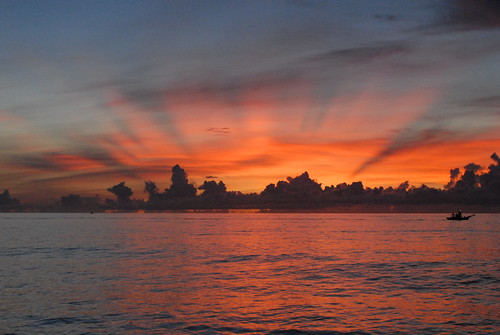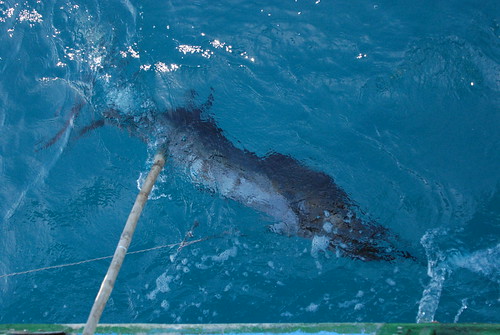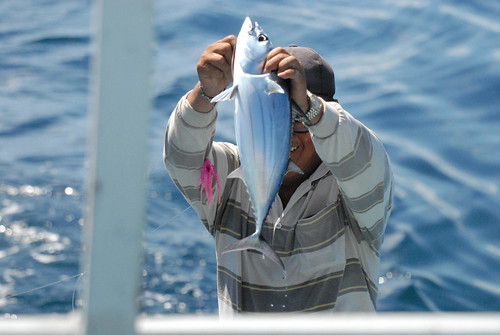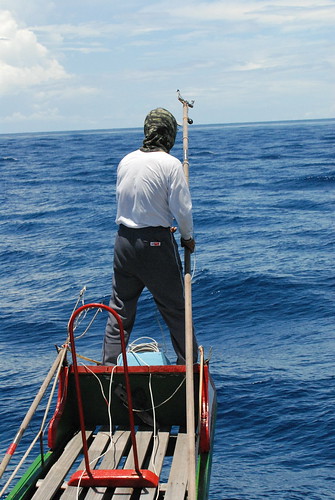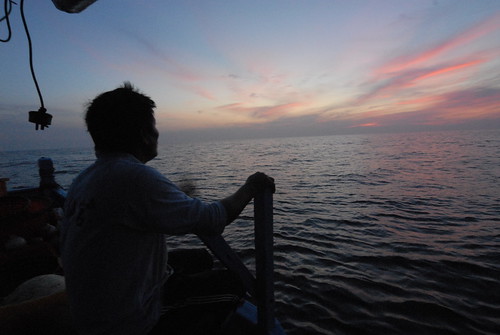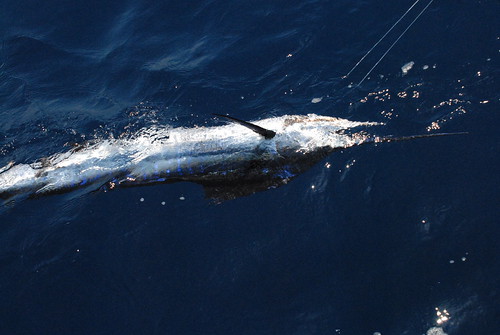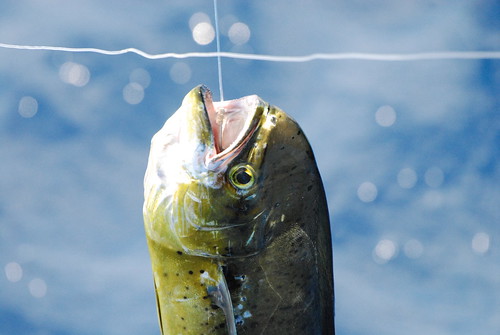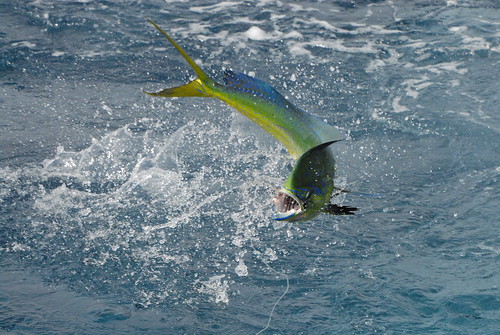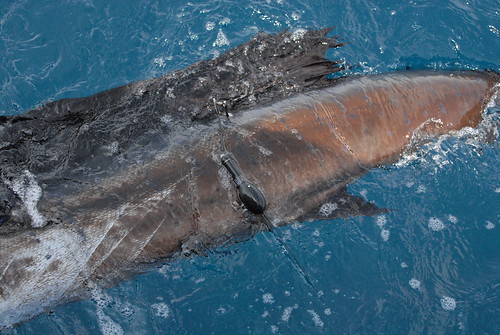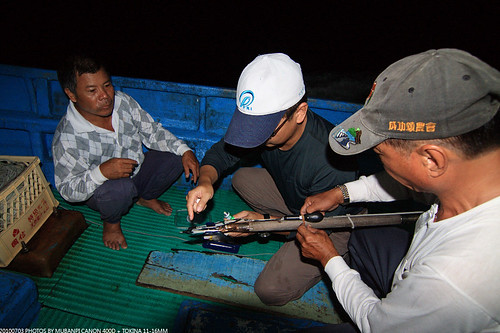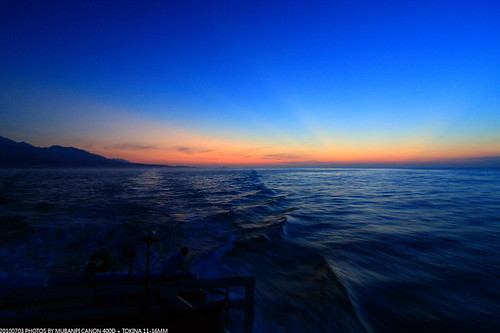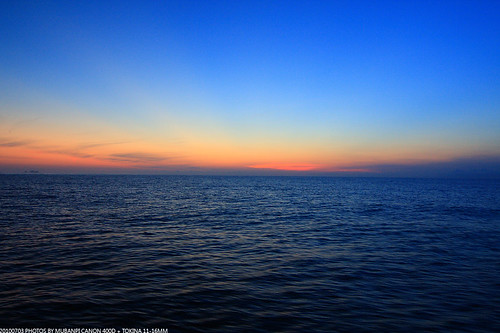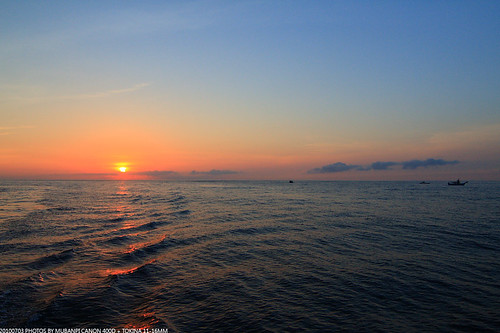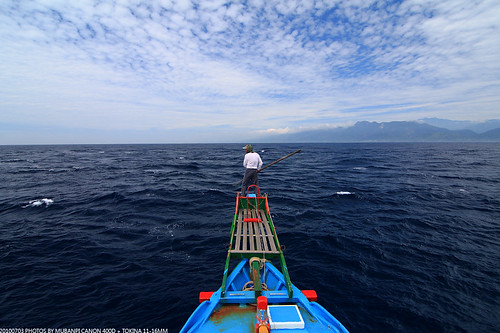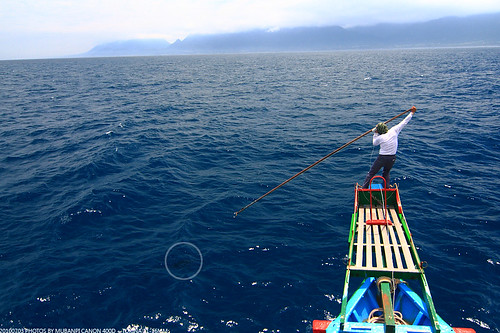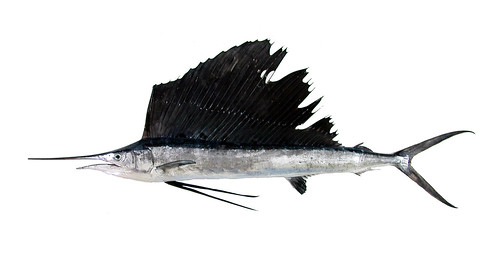01
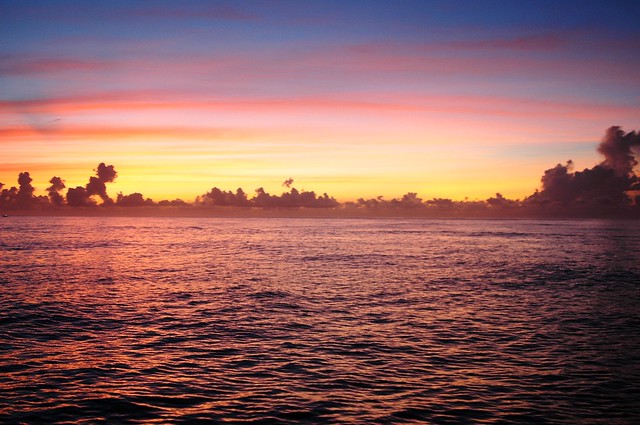
目標:標識立翅旗魚(Black Marlin)
出港時間:清晨四點二十分出港
預報風向:西南風 / 浪況:小浪轉中浪
參與研究人員:江偉全、洪曉敏、Matthew
攝影:江偉全、洪曉敏
錄影:Matthew
今日申請兩台漁船協助標識放流,分別為永福船長(龍漁發)及盛芳船長(漁滿)
外海一片平靜,出海不到半小時,澳籍志工馬修便見兩尾相伴同行的雨傘旗魚
船長說相伴的旗魚很難靠近,所以當船一靠近時,魚便深潛不見蹤影
02
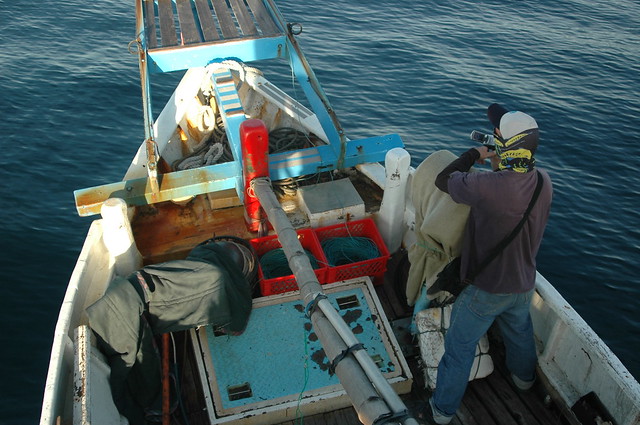
今日見雨傘旗魚次數約九至十次
但都無法順利將其鏢起,盛芳船長說:「漁都潛得太深,不好鏢」
03
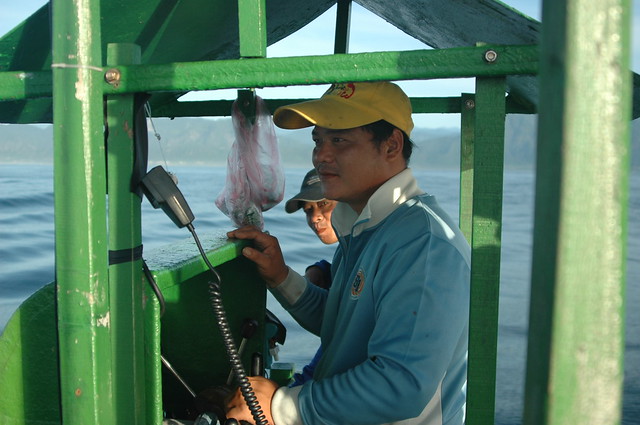
上圖:左為盛芳船長與船員
04
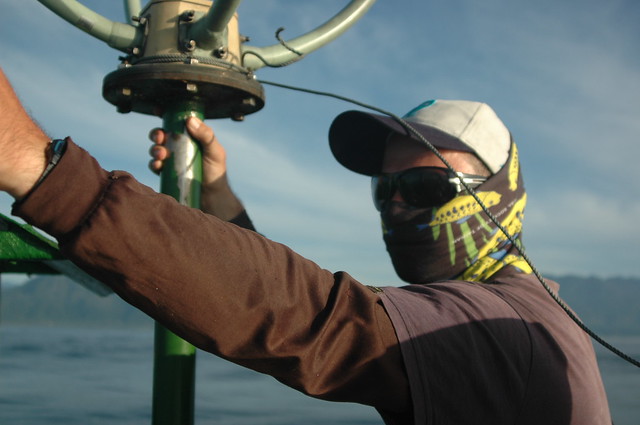
上圖:澳籍志工馬修(Matthew)
05
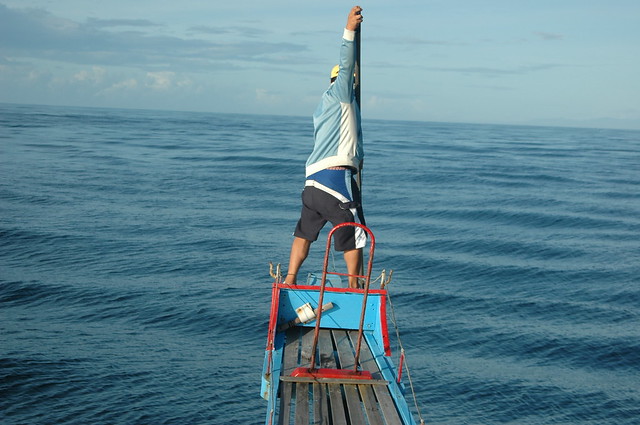
多次的鏢射,仍無法順利擊中雨傘旗魚
06
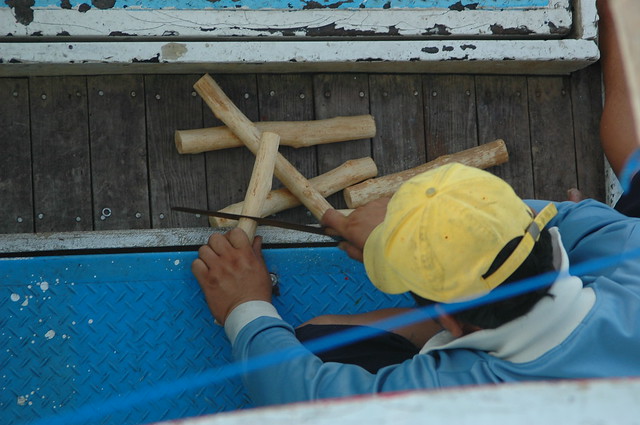
引誘旗魚的假魚餌(木頭)用盡了,船長還馬上現場製造了好幾根
又說,如果塗上白色的漆,效果會更好
07
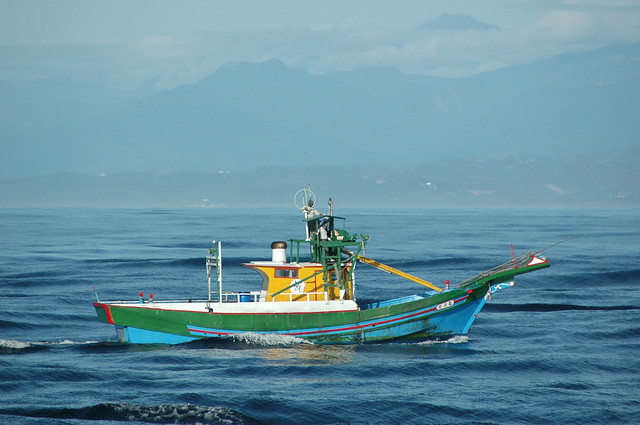
江博士偉全,搭乘該艘漁船(龍漁發)
標識衛星標的目標魚種為「立翅旗魚」,可惜當日並無發現魚跡
08
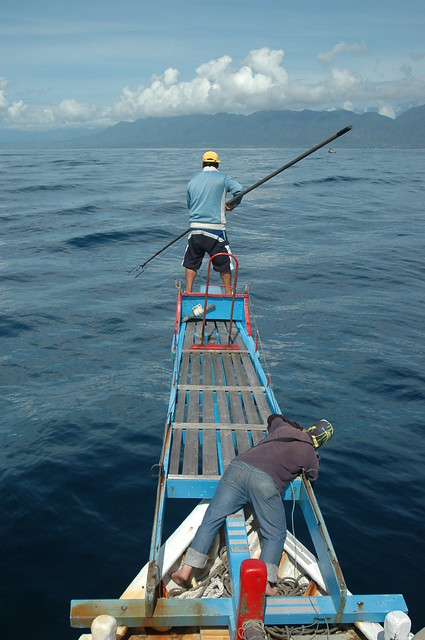
09
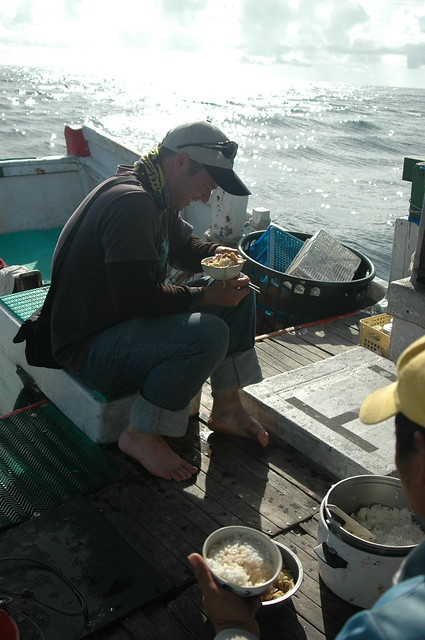
七點多,在船上吃早餐
白飯配大燴炒,盛芳船長手藝很棒
10
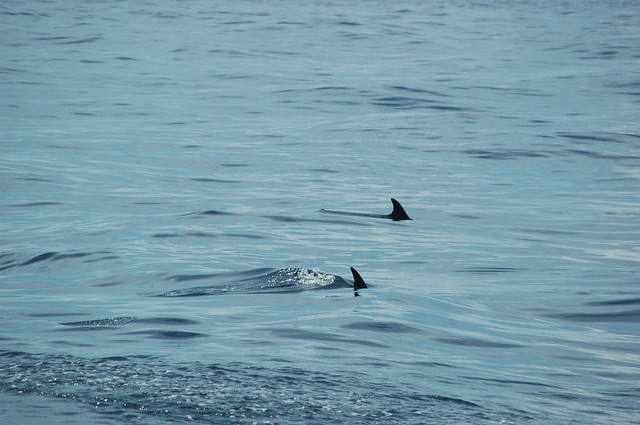
旗魚尾鰭因速度太快,很難拍得
所以,拍拍較溫馴的海豚容易的多
11
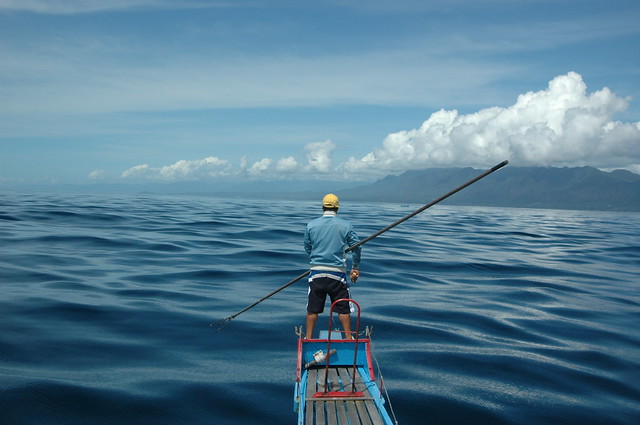
夏天的浪非常的平靜
當日「漁滿號」漁獲僅僅一尾正鰹
且該魚變成了中餐,晒了大半天沒收獲,敗興而歸實屬可惜。
以下為江博士偉全於「龍漁發」漁船拍攝記錄:
01.
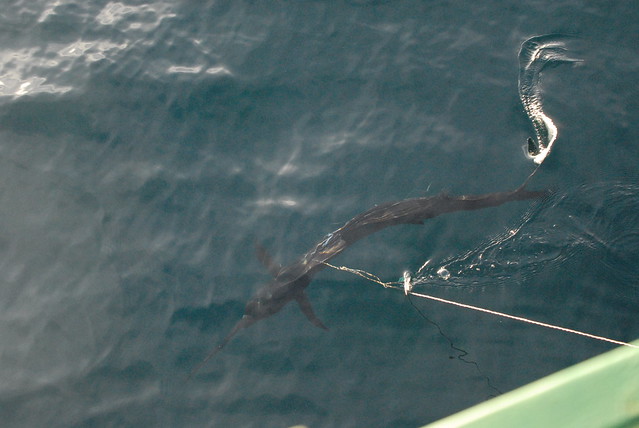
成功鏢得雨傘旗魚
雨傘旗魚身型較薄,体重較輕,在鏢射的技術上有一定的難度
02
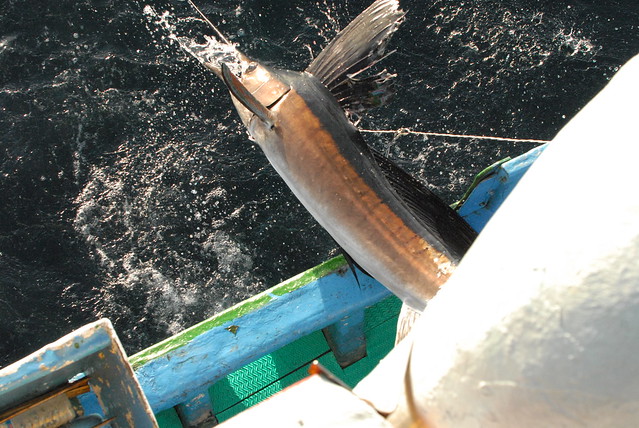
船員趕緊將旗魚拉起,放至冰箱保存
03
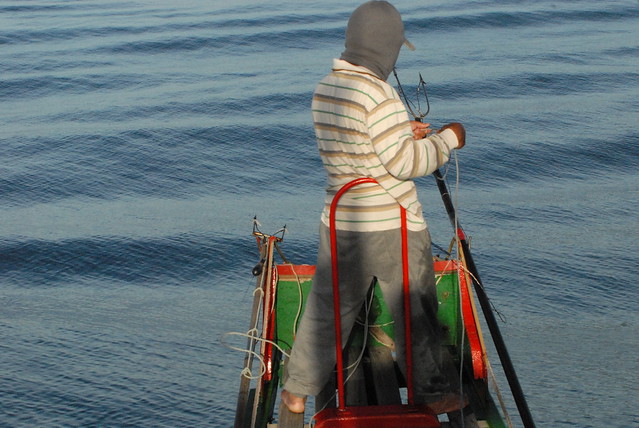
飛傑叔重新整理魚叉
04.
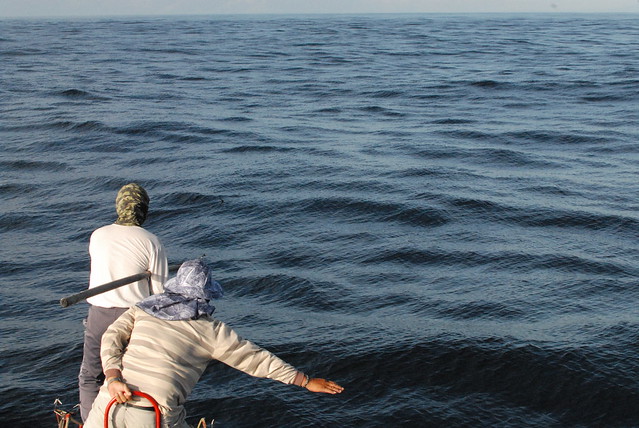
再次發現雨傘旗魚的蹤影
06.
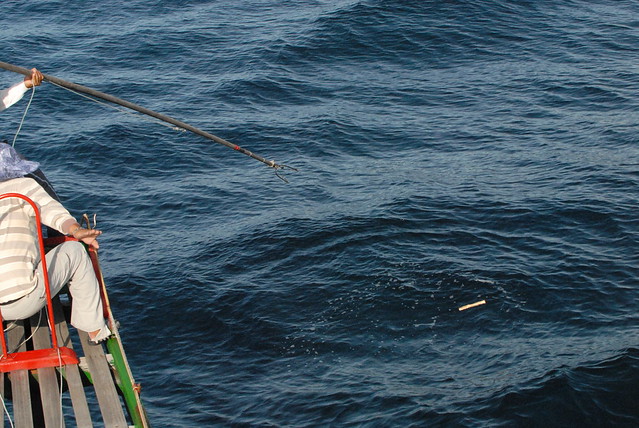
丟出木頭當餌,吸引旗魚的注意
12
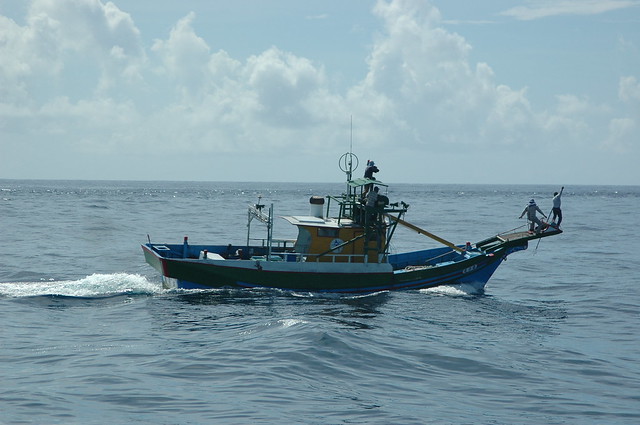
當日「龍漁發」捕獲三尾雨傘旗魚及數尾鰹魚
並無發現目標魚:立翅旗魚(白肉旗魚),於下午二點進港休息。
July 13, 14
Ocean Operation Field Notes
Two vessels were used leaving the port of Shinkang. Capt. Yung Fu &
Capt. Shan Hong. Both vessels are equipped with bowsprit and harpoons
necessary for tagging Sailfish and Billfish in the Eastern Taiwan waters.
The navigated route took us south where the coastal current reaches an
undersea mountain. The depth changes fairly rapidly from 30 m to 18 m.
These geographical features of the oceans benthos disrupt the current
forming foraging and aggregation sites which attracts predators for feeding.
Fishermen know this as good fishing grounds.
The calm seas and little wind provided clear views, however there were
relatively few fish. The crew on Capt. Shan Hong’s boat caught glimpses
of the telltale caudal fin although were unable to strike. Capt. Yung Fu had
better luck accompanied by Dr. Chiang, they captured 2 sailfish although the
operation’s objective is to tag a billfish, a Black or Striped Marlin (Makaira
indica , Tetrapturus audax) with our remaining PSATs (Pop-of Satellite
Archival Tag).
Our charted route on the GPS shows the extent of crisscrossing and
zigzagging the two boats travelled. Working together when the sailfish
appeared briefly and then dived, the other boat was able to spot the
resurfaced fish.
The tragedy of the day occurred with James camera bag falling to the deck
and the camera contained inside ‘popping’ out and falling into the ocean. The
calm conditions and the infrequent activity due to the absence of fish caught
us all by surprise. The camera could only be watched as it drifted from sight
into the deep blue sea.
The second day was to make best use of the calm water and clear skies.
Rains and possible typhoon were forecast for the end of the week so the two
boats set out from harbor pre dawn. The fish proved more elusive than the
previous day.
Dr. Chiang captured some great photographic sequences of sailfish leaping
from the water but the continuous south wind was not ideal conditions.
Sun burnt, tired and hungry – actually, thanks to the trolling lines towed
through the surface waters with bright lures, we caught ‘An-na’ or dwarf bonito
(Euthynnus affinis) cooked with noodles and ginger provided a nice lunch –
we returned to shore.
